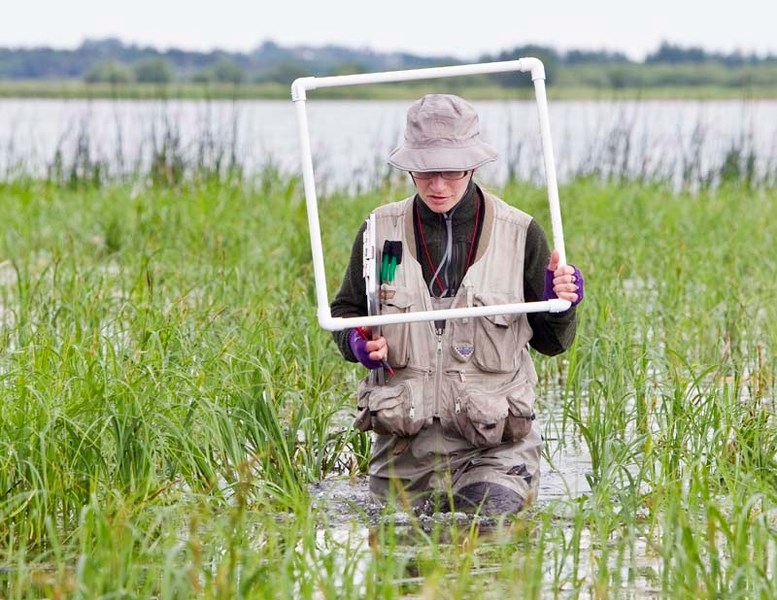Ever tried to count the blades of grass on your lawn?
That's basically what botanist Melanie Patchell has been doing all summer, except her “lawn” is Big Lake. It's meant slogging through the most remote corners of Lois Hole Centennial Provincial Park, through swamps and willow flats, carefully cataloguing the type, location and extent of every plant she finds.
More recently it's meant fording through six-foot-tall grass and coming out covered in pollen. “I've got a bit of a stuffy nose,” she said, smiling, as she took a break from her work this week on the south shore of Big Lake. “Apparently, I'm allergic to breathing in pounds of pollen.”
A recent University of Alberta graduate, Patchell has been hired by the Big Lake Environment Support Society to do the first-ever botanical survey of Lois Hole Park. The project, underway since May, is backed by a $20,000 grant from the Edmonton Community Foundation.
Now, she's inviting the public to help her get the job done. From July 17 to 26, Patchell will be taking small groups of city residents on plant surveys in remote corners of Big Lake.
“There's this big disconnect between the public and the science going on,” Patchell said, and she hopes these tours will help bridge the gap between science and policy. She pitched the tour as a good chance to learn about the park's plants and animals and biology in general.
Wandering Big Lake these last few months has led her to close encounters with moose, deer, nesting ducks, and irritated American coots. “The deer are almost tame,” she noted. “They will snort at you, and I'll snort back at them.”
BLESS hired Patchell to do this study to get some baseline information on the park, said group president Cat McDonald. “If we're going to declare an area to be a natural area, we do need to know what's there.”
BLESS hopes the study will identify the major plant groupings in the park, said member Miles Constable, especially the rare, endangered, and invasive species. It will also establish transects and study plots that can be used to track changes in the park over time.
Patchell was working on transects of the lakeshore this week when the Gazette met her at the end of 231 Street in Edmonton.
“Transects are a great way to survey transition zones,” she said, especially wet (lake) to dry (forest) ones. To do them, she strings about 100 metres of tape between two sticks of rebar, wades waist-deep into the swamp, and starts searching along the tape. She'll step one meter along the tape, drop a small square frame on the ground (or water), catalogue everything in the frame, and then start over again until she's identified all the plants along the tape.
The shoreline areas aren't as diverse as you'd think, she said, with most areas dominated by three or four species of grass and sedge. Still, she's already discovered two rare plants in the park: the golden saxifrage, which is a small herbaceous plant found in damp, shady forests with sickly yellow flowers surrounded by cup-like leaves, and the blunt-fruited sweet cicely, which looks a bit like a carrot.
Survey participants should come prepared with waterproof footwear, bug spray, sun-screen and snacks, McDonald said. “You need to be prepared for a day's hike.”
Surveys will be limited to about six people per day, Patchell said, as any more would trample too many plants.
It's a big job, she said of the survey, but it's also a rewarding one. “It's a very small step towards conserving what we have left of nature, to document it before it's gone.”
The study is scheduled for release this December. Anyone wishing to volunteer can contact BLESS via e-mail at [email protected].




